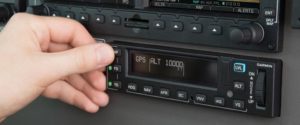
- The Mode C part of your transponder is not functioning properly, and you need to fly to another airport for repairs. Without prior permission, you may not fly within or above Class C airspace or within 30 NM of a Class B airport. What altitude must you remain below?
- You lose your pilot certificate. When must you replace it?
- When you are cleared to taxi to a runway via a route that crosses other runways,
must the controller explicitly clear you across each individual runway? - If several runways must be crossed in order to reach your departure runway, must your aircraft cross the “first” runway before another runway crossing clearance be issued?
- Position lights [your red, green, and white navigation lights] must be turned on from sunset to sunrise. When are your anti-collision lights [your strobe lights] required to be turned on?
- Each required flight crewmember must have their lap belt fastened during three phases of flight: takeoff, landing, and while enroute. During which phases of flight is the PIC required to have his or her shoulder harness fastened
Answers: You must remain below 10,000 feet MSL. 2. Before your next flight. 3. Yes. It used to be that a clearance to a runway implied a clearance across all crossing runways. That procedure, of course, has been changed. 4. Yes. 5. Anti-collision lights must be turned on at all times unless it is in the interest of safety to turn them off. 6. Assuming the aircraft is equipped with shoulder harnesses, the PIC must fasten his or her shoulder harness during takeoff and landing.



